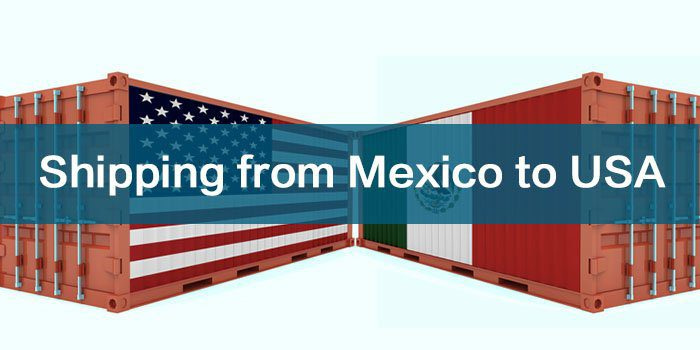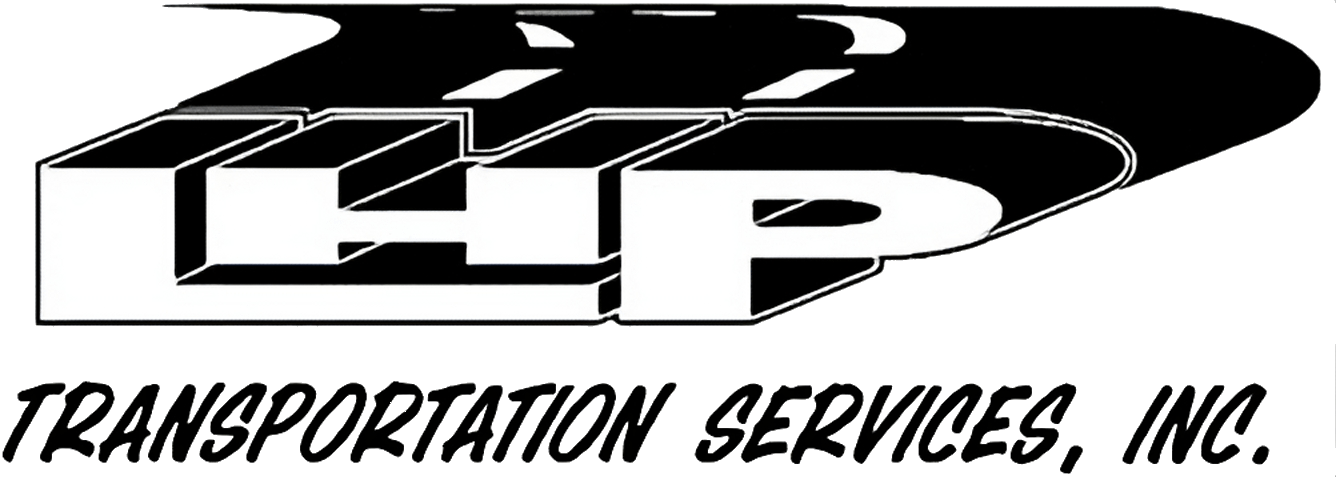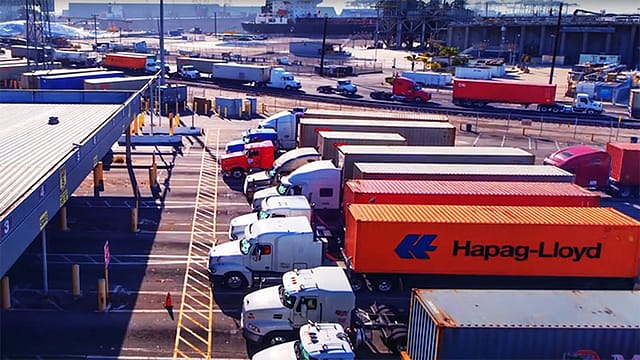
Challenges and Solutions in Cross-Border Shipping from Mexico to the US
Cross-border shipping from Mexico to the US comes with its fair share of challenges that can impact the efficiency and effectiveness of the shipping process. It is crucial for businesses involved in international trade to understand and overcome these challenges to ensure smooth operations and successful deliveries. In this article, we will explore the main challenges in cross-border shipping from Mexico to the US and discuss potential solutions to streamline the process.
1. What are the main challenges in cross-border shipping from Mexico to the US?
Cross-border shipping from Mexico to the US involves navigating through various hurdles that can pose significant challenges. One of the main challenges is customs compliance. It is essential for businesses to comply with the customs regulations of both Mexico and the US to avoid delays, penalties, and potential seizure of goods. This includes accurately completing customs declarations, providing the necessary documentation, and adhering to import and export regulations.
For example, a company based in Mexico that exports clothing to the US must ensure that the goods comply with the relevant customs regulations, such as product labeling requirements and safety standards. Failure to comply with these regulations can lead to delays in the clearance process and potential rejection of the shipment at the border.
Another challenge in cross-border shipping is the issue of documentation. Insufficient or incorrect documentation at the border can cause delays and complications in the shipping process. It is crucial for businesses to provide accurate and complete documentation, including invoices, packing lists, and certificates of origin. Incomplete or incorrect documentation can result in shipments being held at the border until the necessary paperwork is provided.
For instance, a company exporting electronics from Mexico to the US must ensure that all the necessary documentation, such as product specifications, serial numbers, and invoices, are included and accurately filled out. Any missing or incorrect information can lead to delays in customs clearance and potential disruptions in the supply chain.
2. How can customs compliance impact the cross-border shipping process?
Customs compliance plays a vital role in the cross-border shipping process. Failure to comply with customs regulations can have significant implications for businesses. Non-compliance can result in delays in the clearance process, penalties, and even the seizure of goods. It is essential for businesses to have a thorough understanding of the customs requirements of both Mexico and the US to ensure smooth operations.
For example, a company exporting agricultural products from Mexico to the US must comply with the relevant customs regulations, such as food safety standards and phytosanitary requirements. Failing to meet these requirements can lead to delays in clearance and potential rejection of the goods by the US customs authorities.
To navigate the complexities of customs compliance, businesses can work with experienced customs brokers who have a deep understanding of the regulations and can ensure smooth clearance of goods. Customs brokers can provide valuable guidance and assistance in completing the necessary paperwork, submitting the required documentation, and ensuring compliance with the regulations of both countries.
3. What are the potential issues that can arise from insufficient documentation at the border?
Insufficient documentation at the border can cause significant issues in the cross-border shipping process. When the necessary documents are missing or incorrect, it can lead to delays, disruptions, and even the rejection of shipments. It is crucial for businesses to provide accurate and complete documentation to avoid these problems.
For instance, consider a company that exports automotive parts from Mexico to the US. If the required documentation, such as certificates of origin and product specifications, is not provided or contains errors, it can result in delays at the border. This delay can have a cascading effect on the entire supply chain, causing production delays, inventory shortages, and dissatisfied customers.
To avoid documentation issues, businesses should establish clear processes for document preparation and verification. This can include implementing quality control measures to ensure the accuracy and completeness of documentation.Working closely with customs brokers and logistics providers can also help in ensuring that all necessary documentation is in order before the shipment reaches the border.
4. What are tariffs and how do they affect cross-border shipping?
Tariffs are taxes imposed on imported goods. They can have a significant impact on the cost and profitability of cross-border shipping. Tariffs are often used as a political tool to protect domestic industries or negotiate trade agreements. Understanding the tariff rates and regulations of both Mexico and the US is essential for businesses engaged in cross-border shipping.
For example, consider a company that exports steel products from Mexico to the US. If the US imposes higher tariffs on imported steel, it can significantly increase the cost of shipping for the Mexican company. This increase in costs can affect the competitiveness of the company in the US market and potentially lead to a decline in sales.
To navigate the complexities of tariffs, businesses can consult with trade experts or customs brokers who have knowledge of the current tariff rates and any exemptions or preferential trade agreements that may apply. By understanding the tariff landscape, businesses can make informed decisions about pricing, sourcing, and market expansion. They can also explore options such as duty drawback programs, which allow for the recovery of duties paid on imported goods that are later re-exported.
5. What problems can arise from working with ineffective brokers or carriers in cross-border shipping?
Working with ineffective brokers or carriers can have detrimental effects on the cross-border shipping process. Ineffective brokers may lack the necessary expertise and knowledge to navigate the complexities of customs regulations, resulting in delays, penalties, and other complications. Similarly, ineffective carriers may not have the infrastructure, resources, or experience to handle cross-border shipments efficiently.
For instance, consider a company that relies on a broker with limited knowledge of customs regulations for their cross-border shipping needs. The broker may fail to provide the necessary guidance and support, leading to delays and potential penalties. Ineffective carriers, on the other hand, may not have the proper equipment or understanding of cross-border logistics, resulting in inefficient transportation and potential damage to the goods.
To ensure the selection of effective brokers and carriers, businesses can conduct thorough research, seek recommendations from trusted sources, and evaluate the track record and reputation of potential partners. Building strong partnerships with reliable brokers and carriers can help mitigate the risks associated with ineffective service providers. It is crucial for businesses to collaborate with experienced and reputable partners who have a proven track record in cross-border shipping.
6. What are some additional challenges in cross-border shipping, such as capacity crunch and container shortage?
In addition to the challenges mentioned above, cross-border shipping from Mexico to the US faces additional hurdles that can impact the efficiency and cost-effectiveness of the shipping process. One such challenge is the capacity crunch and container shortage. The demand for shipping services often exceeds the available capacity, leading to limited availability of transportation options and increased costs.
For example, during peak seasons or periods of high demand, there may be a shortage of trucking capacity or a lack of available containers for shipping. This can result in delays and increased freight rates. Businesses may need to plan ahead, secure transportation capacity in advance, and explore alternative modes of transportation such as rail or ocean when feasible to mitigate the impact of capacity crunch and container shortage.
Another challenge in cross-border shipping is the declining number of truck drivers. This shortage of qualified drivers can lead to delays in delivery and higher freight rates. It is becoming increasingly important for businesses to work closely with carriers who have a reliable network of drivers and can ensure timely and efficient transportation.
Furthermore, the COVID-19 pandemic has introduced additional challenges to cross-border shipping. It has disrupted global supply chains, introduced uncertainties, and imposed restrictions on trade and transportation. Increased health and safety measures, border closures, and reduced workforce availability have added complexities to the shipping process.
To address these challenges, businesses can explore alternative transportation modes such as rail or ocean when feasible, diversify their supply chain to reduce dependency on specific routes or carriers, and leverage technology to improve visibility and efficiency. Building strong relationships with partners and staying informed about the latest industry developments can also help businesses navigate these challenges.
7. How has the COVID-19 pandemic impacted cross-border shipping between Mexico and the US?
The COVID-19 pandemic has had a profound impact on cross-border shipping between Mexico and the US. The global health crisis has disrupted supply chains, introduced uncertainties, and imposed restrictions on trade and transportation. The pandemic has affected various aspects of cross-border shipping, including logistics, customs clearance, and workforce availability.
For instance, border closures and reduced workforce availability have resulted in delays at the border, impacting the overall shipping process. Health and safety measures, such as increased sanitization protocols and social distancing requirements, have added complexities to the movement of goods.These measures have led to additional time and resources being dedicated to ensuring compliance with health regulations.
To adapt to the challenges posed by the pandemic, businesses involved in cross-border shipping have had to implement new strategies and protocols. This includes utilizing technology and digital solutions to enhance visibility and communication, implementing remote work arrangements, and closely monitoring the evolving regulations and restrictions imposed by both countries.
8. What are some tips for avoiding challenges in cross-border shipping and streamlining the process?
To avoid challenges in cross-border shipping and streamline the process, businesses can implement several strategies and best practices. Planning ahead and preparing for potential obstacles is crucial. This includes ensuring compliance with customs regulations, obtaining the necessary documentation, and coordinating with brokers and carriers well in advance.
Diversifying transport modes can help mitigate the risks associated with capacity crunch and container shortage. Exploring alternative modes such as rail or ocean can provide greater flexibility and options for businesses. Utilizing technology tools such as Transportation Management Systems (TMS) can improve load control and visibility in the cross-border supply chain.
Developing strong partnerships with brokers, carriers, and other stakeholders is vital for success in cross-border shipping. Collaboration and open communication can help address challenges more effectively and create a more resilient supply chain. Establishing long-term partnerships based on trust and shared objectives can lead to smoother operations and improved outcomes.
9. How can working with a third-party logistics broker experienced in cross-border shipping help alleviate challenges?
Working with a third-party logistics (3PL) broker experienced in cross-border shipping can provide significant benefits and help alleviate challenges. A reputable and experienced 3PL provider can offer valuable expertise in navigating the complexities of customs compliance, documentation requirements, and transportation logistics.
For example, a company that partners with a 3PL provider specializing in cross-border shipping can benefit from their knowledge of the regulations and requirements of both Mexico and the US. The 3PL provider can guide the company through the customs clearance process, ensure compliance with documentation requirements, and help optimize transportation logistics to minimize delays and costs.
By leveraging the expertise and network of a 3PL provider, businesses can streamline their cross-border shipping operations and focus on their core competencies. The 3PL provider can handle the complexities of customs compliance, documentation, and transportation logistics, allowing businesses to allocate their resources more efficiently and effectively.
10. What solutions does LHP Transportation Services offer for cross-border shipping and their expertise in the North American market?
LHP Transportation Services offers comprehensive solutions for cross-border shipping and brings expertise in the North American market. As a trusted 3PL provider, LHP understands the challenges and intricacies of cross-border shipping from Mexico to the US. They offer a range of services, including customs brokerage, freight forwarding, and transportation management.
LHP’s team of experienced professionals can provide valuable guidance and support in navigating the complexities of customs compliance, documentation requirements, and transportation logistics. They have a deep understanding of the regulations and requirements of both Mexico and the US, ensuring smooth operations and efficient clearance of goods at the border.
Furthermore, LHP ‘s expertise in the North American market enables them to offer tailored solutions for businesses engaged in cross-border shipping. They have established strong partnerships with reliable carriers, customs brokers, and other stakeholders, ensuring seamless coordination and efficient transportation.
In conclusion, cross-border shipping from Mexico to the US presents various challenges that can impact the efficiency and cost-effectiveness of the shipping process. Customs compliance, documentation issues, tariffs, ineffective brokers or carriers, and additional challenges such as capacity crunch and the COVID-19 pandemic can all pose obstacles to successful cross-border shipping. However, by understanding these challenges and implementing appropriate solutions, businesses can streamline the process and ensure smooth operations in their cross-border shipping endeavors. Working with experienced 3PL providers like LHP Transportation Services can provide valuable expertise and support, helping businesses navigate the complexities of cross-border shipping and optimize their supply chain operations.




